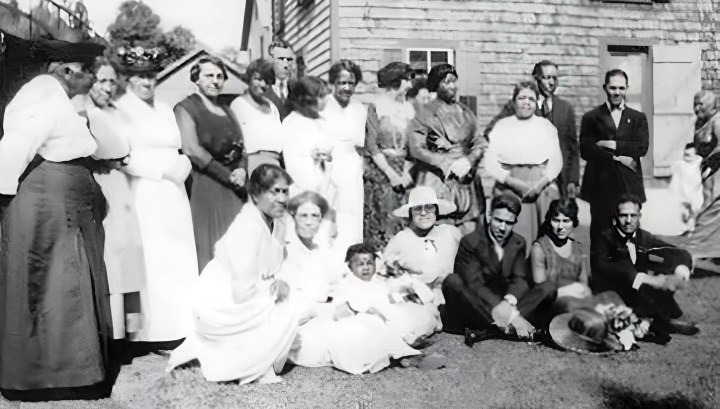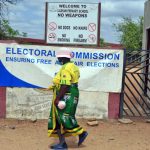FOOTNOTES OF HISTORY OP-ED
Letter from Connecticut: The extinction of the Wangunks has been greatly exaggerated

Stories of ‘lost tribes’ keep being repeated in Native American books, museums, movies and art exhibitions. But they are still very much alive.
In 1897, Mark Twain was contacted by The London Observer. Were the New York newspapers right, they wanted to know, that Twain was already dead? The humourist’s response became legend: “Just say the reports are greatly exaggerated.”
A friend heard I was interested in the parallels between US and South African colonialism. So she recommended I connect with Gary O’Neill, widely described in the local media as one of the last living Wangunks – the nation whose villages dotted the Connecticut River when British fur traders first arrived there in the 1620s.
Today, the talk of the Wangunks’ extinction is so widespread they are even commemorated in the Hall of Lost Tribes at the Native-run, Mohegan Sun casino.
But, on meeting Gary, I quickly learnt that, like Twain’s death, the Wangunks’ demise has been embellished.
“Nonsense!” Gary told me when I asked him about an exhibit we’d seen at the Connecticut Historical Society, claiming that the number of Native Americans living in the state dropped to a mere 16 in 1860. “There are hundreds of Wangunks, alone, still alive today.”
The first known European to encounter Wangunks was a Dutch trader named Adriaen Block, in 1614. Sailing up the Quinnetuket – the “long, tidal river” – Block spotted several villages, including a major one near today’s state capital Hartford.
“The natives there plant maize,” wrote Block, admiringly, “and they had … a fort for protection against the attacks of their enemies.”
On the lucrative fur trade route
According to the Native Northeast Portal, as the Connecticut River became a transportation artery for the lucrative colonial fur trade, the Wangunk struggled to hold off larger and more powerful nations like the Pequot, Narragansett and, later, the British.
Then, in one of the single most unambiguous legal acts in 17th-century colonial America, the Connecticut General Court reserved two parcels of land for the Wangunks, 20ha along the river and 100ha in an upland meadow.
The story of how that land was taken away will be familiar to South Africans.
English missionaries built churches and houses there, then persuaded Wangunk families to join religious revivals in other locations, depleting local numbers.
Renegade Wangunks lacking authorisation then collaborated with land-hungry settlers to petition the legislature to sell the territory. By 1767, the reservation had been incorporated into the white settlement of Middletown.
A quarter of a millennium later, Gary O’Neill lives in a white clapboard house on a suburban street, just 10 minutes’ drive from this lost homeland. For the occasion of our meeting, he wore a traditional breechcloth.
“My home is yours,” he told my husband and me, beaming, and we went ahead and made ourselves comfortable on a plain sofa, in front of a merrily blazing electric fire.
A childhood of backbreaking work
Gary, 72, grew up the younger son of Sonny O’Neill, owner of a local septic tank business. He remembers a childhood of backbreaking work after school, laying pebble driveways and installing plumbing.
He also recalls feeling an outsider. His father was “a jock” and ex-president of his high school class. Gary, on the other hand, hated sport and was an unpopular teenager, being frequently teased for his ruddy complexion.
When Gary graduated from university, Sonny failed to attend the ceremony.
Yet woven through all this, a thread of consolation, was Gary’s Wangunk heritage.
“Every year, hundreds of us would hold a powwow,” Gary explained. “We would trade vegetables and cook squash soup. The elders would relate our history. New members would be welcomed into the tribe.”
One of the latter was Gary’s mother, a woman of African American and Cape Verdean descent.
As a teenager, Gary’s older brother took up ceramics. Incidentally, in doing so he revived an ancient tradition: Wangunk archaeological sites hold some of the finest shards and sculptures east of the Appalachians.
One day his brother asked Gary for help creating a pot.
“Oh, feeling the clay in my hands that day, shaping it into something beautiful!” Gary still smiled at the memory. “I just fell in love with visual art.”
Gary remains a practising sculptor. He recently staged an exhibition at Wesleyan University called Comforts From Our Past, with compositions created from old family furniture.
As a youth, he spent a year as an exchange student in Colombia, where “for the first time everyone else looked like me”. He got two degrees, then a job teaching art at Washington Middle School – for grades 6 to 8 – against the objections of a racist principal. Forty-seven years later, Gary still teaches there.
In time, he married and had a daughter, Kyle, who went on also to become an accomplished artist.
“Kyle has Downe’s Syndrome,” Gary said. “One of my worst memories was when my brother said I should give her up, that she’d be a burden. But she ended up my greatest joy.”
Gary and his wife are now divorced, but Kyle still lives with him. Kyle was away when we visited, but we saw her colourful, interesting monoprints, vaguely reminiscent of Mondrian or Rothko.
Wangunk women sachems
Gary seems to have become the leading tribe historian by accident. Inspired by an afternoon of going through his great-grandmother’s old photographs, he decided to write a paper on family history as part of his Master’s degree.
He asked his grandmother, Bessie, for help. But: “She just didn’t want to talk about it.”
Instead, Gary roped in his Aunt Clara, who told him about his ancestor Jonathan Palmer, who was enslaved and sent to the Caribbean. She explained about the Wangunk women sachems, or chiefs, of old, who helped the tribe navigate colonialism.
She even told him how she, herself, had once written to Eleanor Roosevelt to protest against racist hiring in the federal government offices located in Middletown. Roosevelt personally intervened, and Aunt Clara got the job for which she was qualified.
Eventually, Bessie opened up, too, talking about how, over the years, the Connecticut Wangunks, a tiny nation, adopted assimilation and invisibility for survival, speaking English so their neighbours could understand them, and joining Congregational churches so they could acquire what economists call social capital, the connections that allow us to prosper.
“But all the time,” Gary said, “we also held on to our culture. We shared food and company. We taught each other to respect the Earth.”
Just before Sonny O’Neill died, Bessie told her son, “You haven’t done right by Gary. He is not like you. He is meant to tell the Wangunk story.”
Sonny apologised to his son on his deathbed, an act for which, Gary told us, he still feels grateful.
Coming back, though, to the Hall of Lost Tribes and the reports of the Wangunks’ extinction: even allowing for the tribe’s deliberately low-key approach, why, I wondered, are so many people eager to view the Wangunks as lost?
Gary shrugged. But fact is, premature disappearance is a recurring theme in Native American books, museums, movies, and art exhibitions.
General Sheridan may have thought the only good Indian is a dead one. But we are not dead yet, respond these voices.
So, fellow Americans, please talk to us. Be our partners. Let’s learn from each other’s wisdom.
Rather than visiting graves or rehashing smallpox epidemics, let’s sit together in a living room on a chilly spring day, in front of a fireplace, getting to know each other, enjoying cheese and wine, and talking about how we can build a fairer country, one united enough to prosper through the challenges ahead. DM
Glen Retief’s The Jack Bank: A Memoir of a South African Childhood, won a Lambda Literary Award. He teaches creative nonfiction at Susquehanna University and recently spent a year in South Africa as Fulbright Scholar.




















Comments - Please login in order to comment.